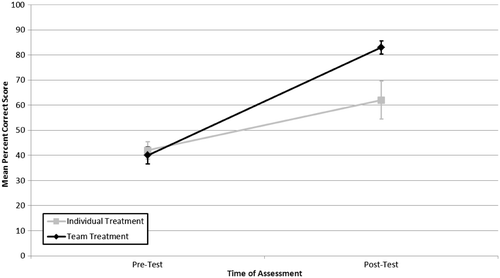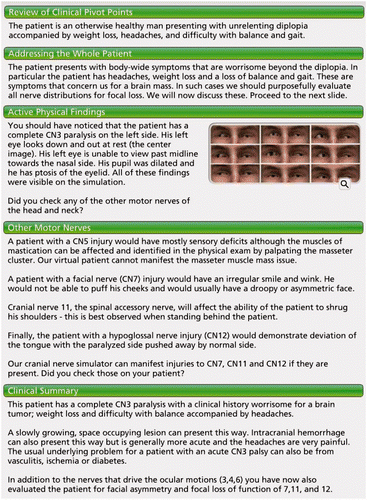Figures & data
Figure 2. Research procedure. Notes: aStudy instrument was completed individually by every student; students participating as members of a team were instructed not to confer about responses. bStudy activity was completed by students within their respective treatments. cStudy instrument was submitted individually by every student; however, students participating as members of a team were permitted to confer about content for inclusion on the case note forms.

Figure 4. Pre-/post-test scorea scatterplots by treatment: disordinal interaction with simultaneous regions of significance and crossover point defined. Note: aScores are displayed as number of items correct.

Figure 5. Mean pre-/post-test scoresa by treatment for students who scored ≤ 50% at pre-test. Note: aMean post-test scores differ significantly between treatments, p = 0.02.

Table 1. Student perspectives survey: mean ratingsa of system usability and student confidence
Table 2. Student perspectives survey: top responsesa to open-ended items

